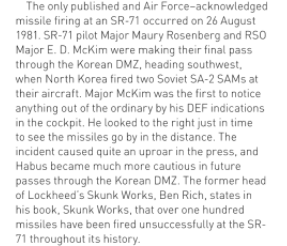- Joined
- 5 December 2010
- Messages
- 502
- Reaction score
- 638
Apparently the SR 71 was able to evade Soviet air defences simply because it travelled too fast.
The reason I am interested in this is that there were proposals in 1960/61 for a British ramjet missile (OR 1182) which would fly at speeds in excess of M = 2 and at high altitude. A report was produced by the RRE (Royal Radar Establishment) which said that such a missile would be vulnerable to the Soviet air defences. I have the feeling that the report was written in such a way as to discredit the idea of using a ramjet missile. A couple of questions then.
Firstly, if the SR 71 was able to evade the defences so easily, surely a ramjet missile would have a fairly good chance of also evading the defences.
Secondly, to mirror the threat so speak, would Bloodhound have been capable of intercepting a Mach 2 missile at altitude?
The reason I am interested in this is that there were proposals in 1960/61 for a British ramjet missile (OR 1182) which would fly at speeds in excess of M = 2 and at high altitude. A report was produced by the RRE (Royal Radar Establishment) which said that such a missile would be vulnerable to the Soviet air defences. I have the feeling that the report was written in such a way as to discredit the idea of using a ramjet missile. A couple of questions then.
Firstly, if the SR 71 was able to evade the defences so easily, surely a ramjet missile would have a fairly good chance of also evading the defences.
Secondly, to mirror the threat so speak, would Bloodhound have been capable of intercepting a Mach 2 missile at altitude?

